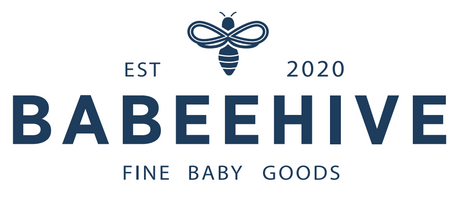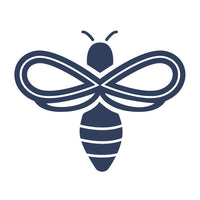Our Dysphagia Story
I am sharing our story in the hopes that we can help others who have struggled as they search for answers. When our youngest son Tate was born, we knew there was something going on. He would not breastfeed in the hospital, could not latch and would cry when I tried to feed him. He also had severe jaundice. As we went to several appointments with our pediatrician in the next couple of weeks, our baby continued to lose weight.
In desperation, I found a lactation consultant who was amazing. She was able to give us some answers. She realized Tate had a severe tongue tie, and a lip tie. At her recommendation, and after searching online for answers, we scheduled appointments with a pediatric dentist and scheduled a swallow study at the recommendation of our pediatrician.
When he was just over a week old, our baby had a laser tongue tie and lip tie revision that were performed by our pediatric dentist. It was difficult, but we thought that was the reason he was unable to breastfeed.
At two weeks old, he failed his first swallow study. He was diagnosed with Dysphagia. For those not familiar with the term, Dysphagia is the medical term for someone with swallowing issues. During the swallow study we learned that our baby Tate was aspirating 80 percent of thin liquids into his lungs. They recommended for his safety that we stop breastfeeding, pump and then thicken the milk to feed him. I felt very conflicted.
This was our fifth child, and I knew the benefits of breastmilk. So, for the next four months, I pumped exclusively, and started feeding my baby un-thickened breastmilk in a side-lying position with a Dr. Brown bottle using a preemie nipple at the recommendation of the therapist in feeding therapy.
When Tate was four months old, he began to be able to nurse in a side position successfully. This is a bit controversial, but to my understanding if anything is to be aspirated, breastmilk is the best because of the theory that it can be reabsorbed into the lung tissue. I am not recommending that this choice is for everyone, but I decided the immune and nutritional benefits of breastmilk outweighed the reasons I was told not to breastfeed.
Once he started to get older, we began to try to give him puree and other honey thick consistency foods. He choked often and was unable to handle any solid foods until about nine months. We continued searching for solutions as we visited with speech language pathologists, occupational therapists, nutritionists and a dietitian.
Spoon feeding was very time consuming and we were not able to give our baby any normal solid toddler foods like puffs, crackers, cheerios etc. because he would choke. During one of our therapy visits, we were told it was time to wean our baby off of Dr. Brown bottles. He was not getting enough to drink with the preemie nipple but could not handle the flow of a larger nipple. We decided at that point to supplement breastfeeding by starting to thicken additional liquid using the Honey Bear. If you are not familiar, it is a squeeze honey bear (yes the kind they put honey in), with a piece of refrigerator tubing for the straw. We did not have a good experience with it.
Our son has a weak suck, so the vacuum created when sucking made it difficult for him to get the thickened liquid out. He also started pulling out the straw in frustration and throwing the honey bear. If you have ever tried to drink a shake or a slushy, you know a straw does not work well for thicker liquids. You must maneuver the straw around to suck more out. This is not possible with the honey bear or easy for a baby or toddler to do.
Within a week or two with the honey bear we realized that if I stopped breastfeeding, he would need a g-tube. He was getting older and I wanted to be done breastfeeding.
We tried several things including a weighted straw cup, sippy cups, reusable squeeze food pouches, silicone squeeze pouches, 360 cups, etc. with little luck. Then, while searching online, I found a food bottle exclusively sold abroad that looked promising. We ordered several as we had friends visiting there that brought them back to us.
We used it immediately and our son went from never taking more than 12 ounces in a day to 21 ounces in the first three hours. We were elated! I knew this was the answer! My son would be able to stay hydrated and not need a g-tube. I could also stop nursing when I was ready.
The product changed everything for us is called the Subo Baby Food Bottle.
I soon realized that there was a huge need for not only those with pediatric dysphagia, but it could also possibly help others with low muscle tone, swallowing problems, or those who struggle to feed themselves independently. I knew if it worked for us and if I could help others avoid a needing a ng-tube or g-tube, or help those in the geriatric community be more independent, then I had to do all I could to make it available in the United States.
After nine months of discussions we are finally launching the Subo Food Bottle in the United States. I look forward to helping those in need as they navigate how to help themselves or those they love be more independent and safely consume thickened liquids.
The food bottle was designed to hold purees, applesauce, smoothies, oatmeal etc. We have found it works perfectly with thickened liquids as well. We are on honey thick but have also seen great success with nectar thick. We use the 5mm straw spout for thickened liquids. You can also use it for oatmeal and thin spaghetti when used with the 12mm original spout.
If you or someone you love could benefit from using the Subo Food Bottle try it, and become part of our community. For more stories and updates, follow us on Facebook and Instagram @babeehivegoods.
Anna Seelos, Co-Founder, Babeehive Goods


